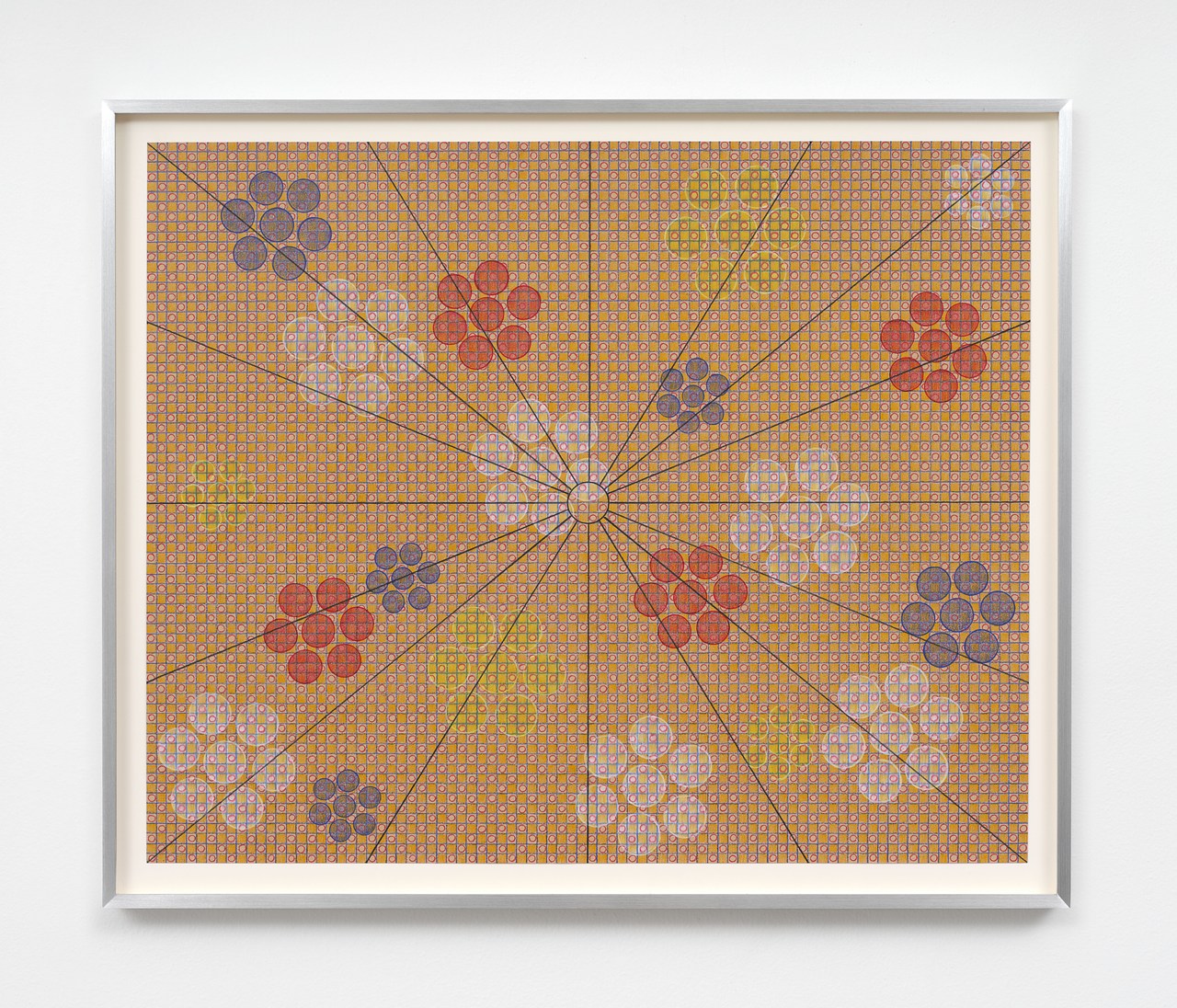West (Flag 1) (Flag 3) (Flag 6)
2011 - Photography (Photography)
11H x 14W inches
Alexandre da Cunha
The series West (Flag 1), West (Flag 3), and West (Flag 6) continues da Cunha’s ongoing exploration of the form’s various vertical, horizontal, and diagonal stripes. Here, da Cunha overlays thick bars of color (blue, green, and red) on photographs of the ocean at sunset with surfers in floating on the horizon. The solid colors contrast with the fading colors reflected in the sunset, and the tilted orientation suggests a familiar California beach scene.
Alexandre da Cunha reinvents found objects in surprising ways that combine the material characteristics of Arte Povera with the concerns and techniques of painting. Da Cunha’s work often features flags—either as a found material per se or as a constructed form—that reflect the artist’s interest in issues of nationality, governmental politics, allegiance, and culture.
Colors:
Related works featuring themes of: » Brazil, » Concrete, » Political, » Assemblage, » Political Minimalism, » Abstract, » Abstract Sculpture, » Brazilian
» see more

© » KADIST
Chadwick Rantanen
2010Telescopic Pole is an adjustable telescopic pole that extends vertically from floor to ceiling and is held up by its own internal pressure...

© » KADIST
Marcelo Cidade
2010Marcelo Cidade’s sculpture Abuso de poder (Abuse of Power, 2010) is a mousetrap elegantly crafted in Carrara marble...

© » KADIST
Cinthia Marcelle
2012Cinthia Marcelle’s video work Automóvel (2012) re-edits the mundane rhythms of automotive traffic into a highly compelling and seemingly choreographed meditation on sequence, motion, and time...
Other related works, blended automatically
» see more

© » KADIST
Alexandre da Cunha
2005His Deck Painting I recalls the simplistic stripes of conceptual artist Daniel Buren, or the minimal lines of twentieth century abstract painting, but is in reality a readymade, fashioned from repurposed fabric of deck chairs...

© » KADIST
Chadwick Rantanen
2010Telescopic Pole is an adjustable telescopic pole that extends vertically from floor to ceiling and is held up by its own internal pressure...

© » KADIST
Clarissa Tossin
2012In Fordlândia Fieldwork (2012), Tossin documents the remains of Henry Ford’s rubber enterprise Fordlândia, built in 1928 in the Brazilian Amazon to export cultivated rubber for the booming automobile industry...
Related works sharing similar palette
» see more

© » SOMETHING CURATED
Interview: Roberto Gil de Montes on Huichol Art and the Chicano Movement - Something Curated Share this: Facebook Twitter Tumblr Features Interviews Profiles Guides Jobs Interviews - 27 Nov 2023 - Share Born in Guadalajara, Mexico, Roberto Gil de Montes immigrated to the United States with his family at the age of 13, settling in East Los Angeles shortly before the 1968 Chicano protests for educational equality...

© » ARTS EQUATOR
A Dream Under The Southern Bough: A Look Back and A Look Forward | ArtsEquator Thinking and Talking about Arts and Culture in Southeast Asia ArtsEquator Viewpoints CRISPI June 5, 2021 Alongside Goh Boon Teck, artistic director of Toy Factory, we look back at the journey of A Dream Under The Southern Bough , an ambitious trilogy retelling of Tang Xianzu’s 16th century epic of the same name, which combines Kun opera with contemporary staging and elements...
Related works from the » 2010's created around » London, United Kingdom
» see more

© » KADIST
Matt Mullican
2018Mullican’s Stick Figure Drawings depict characters reduced to their most basic graphic representation...

© » KADIST
Ryan Gander
2012Epiphany…learnt through hardship is composed of a bronze sculpture depicting the model of the little dancer of Degas, in the pose of a female nude photographed by Edward Weston (Nude, 1936) accompanied by a blue cube...
Other works by: » Alexandre da Cunha
» see more

© » KADIST
Alexandre da Cunha
2005His Deck Painting I recalls the simplistic stripes of conceptual artist Daniel Buren, or the minimal lines of twentieth century abstract painting, but is in reality a readymade, fashioned from repurposed fabric of deck chairs...

© » KADIST
Alexandre da Cunha
2005Glaze (Savana) (2005) is an assemblage of found materials: a car wheel, a tire, and a wooden plinth of the type traditionally used to display sculpture...

© » KADIST
Alexandre da Cunha
2010In Laissez-Faire (Rainbow Flag) da Cunha has turned a beach towel into both a painting and a flag...
Related works found in the same semantic group
» see more

© » KADIST
John Gerrard
2016Flag (Thames) 2016 depicts a small section of the Thames River—one that is adjacent to the Palace of Westminster in London—as an algorithmic representation on an LED panel...

© » KADIST
Jao Chia-En
200930 Proposals of Flag explores the relationships between signs, meanings, aesthetics, and nations...

© » KADIST
Erbossyn Meldibekov
2017Game (Six Pieces) by Erbossyn Meldibekov is inspired by the popular Rubik’s cube puzzle and is composed of three colors (red, green and white) instead of six, referencing the colors of the Afghan flag...

© » KADIST
Fred Wilson
2009Fred Wilson’s flag paintings document the 20th century history of African people, indexing the period of liberation from colonialism...




